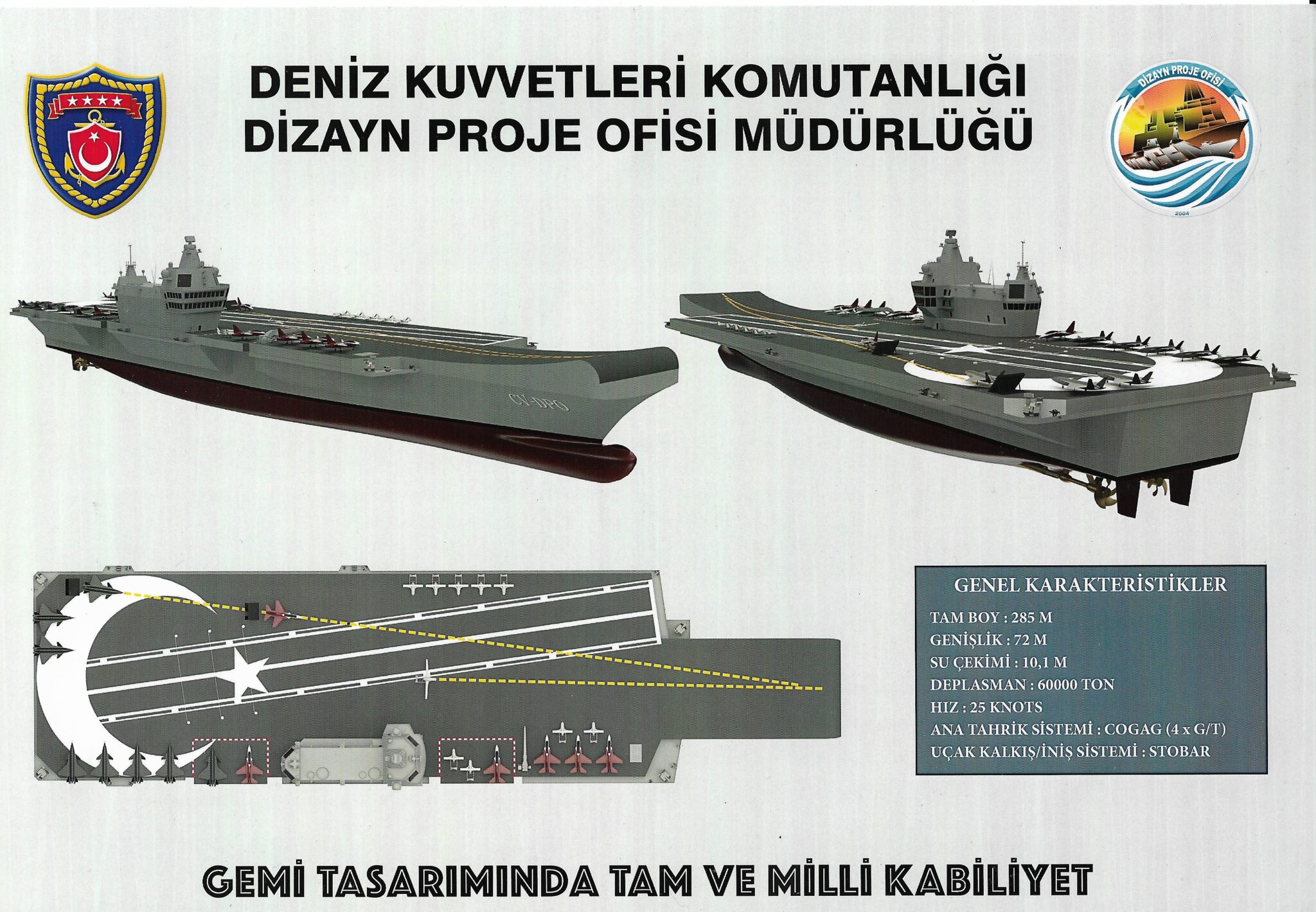New details about Turkiye’s future aircraft carrier – Naval News
On April 25, 2024, Turkish Navy’s Istanbul Naval Shipyard opened its gates to inform the press about the latest developments in various naval projects. The most intriguing one is undoubtedly the future aircraft carrier.
In February 2024, during President Recep Tayyip Erdoğan’s visit to the Design Project Office at the Istanbul Naval Shipyard, the Turkish Navy’s indigenous aircraft carrier development and construction project was unveiled for the first time. Previously, there had been confusion within defense media circles, as this project had been mistakenly associated with the 2nd LHD project. However, it became evident after this visit that it was indeed a separate aircraft carrier development project. Some features of the future aircraft carrier were also visible in the photographs taken during the visit.
Yesterday, on April 24, 2024, the commander of Istanbul Naval Shipyard hosted the journalists, presenting them with the latest updates on significant naval projects. The media tour primarily centered around the future aircraft carrier project. Officials took the opportunity to disclose additional details regarding the carrier’s specifications during the media briefing.
According to statements made to journalists by the Design Project Office, the aircraft carrier will not receive any support from a foreign country in its design and construction. Instead, it will be built entirely domestically, showcasing Turkiye’s self-reliance in this significant naval project.
The aircraft carrier is set to include three runways, with two designated for takeoff and one for landing purposes. Initially, there will be no catapult system onboard. Instead, the Design Project Office intends to utilize a modular ramp. However, the long-term plan involves the development of an indigenous catapult system by Turkish engineers, which will eventually replace the modular ramp.
The initial plan outlines the deployment of 50 aircraft, with 20 to be stationed on the deck and 30 housed in the hangar. Among these aircraft are the naval version of TAI’s Hurjet light attack aircraft, TAI ANKA-III unmanned jet fighter, Baykar’s Bayraktar KIZILELMA unmanned jet fighter, and TB-3 UCAV. According to Defence Turkey, Turkish defense officials have indicated that the number of aircraft may be increased as the project progresses. DPO is in touch with TAI and Baykar for the project.

The carrier will be armed with a 32-cell MIDLAS VLS (Vertical Launching System), and four Gökdeniz Close-in Weapon systems for self-defence.
The carrier’s technical specifications were unveiled in February 2024, with no changes noted. It will maintain a length of 285 meters and a displacement of 60,000 tonnes. Additionally, the carrier will be equipped with Combined Gas Turbine and Gas Turbine (COGAG) propulsion, ensuring a maximum speed of 25 knots. The DPO plans to mount four LM2500 gas turbines as the main propulsion system.
The participants also learned that a naval version of the KAAN fighter jet is on the table, but we still need more information to confirm this rumour.
Author’s note
After the initial details of Turkiye’s future aircraft carrier were disclosed, further information emerged when the Istanbul Naval Shipyard’s Design Project Office welcomed the press. Since these are preliminary designs, it’s crucial not to overanalyze the specifics, as initial designs invariably evolve based on requirements and technological advancements. The key takeaway here is the ongoing active engagement with this topic.
While officials have shared preliminary designs, there is currently no timetable announced for the aircraft carrier. Some voices within Turkey argue that the Turkish Navy should prioritize critical projects like the I-class frigate and the TF2000 air defense destroyer over the aircraft carrier. However, it’s worth noting that progress on some of these projects may be achieved or even completed before the construction phase of the aircraft carrier begins.
The choice of aircraft to be carried by the aircraft carrier is another significant issue. Solutions such as the Hürjet or unmanned aircraft may provide limited air power for the carrier’s force. However, the consideration of the naval version of the KAAN jet suggests a more ambitious vision in this regard. Furthermore, recent improvements in Turkish-American relations have led to the US Congress approving the delivery of F-16 Block 70 Viper fighters to Turkey. Subsequently, some officials have made positive statements regarding Turkiye’s potential return to the F-35 program. If progress continues in this direction, it could be considered as an option for the aircraft carrier’s air complement in the future.



